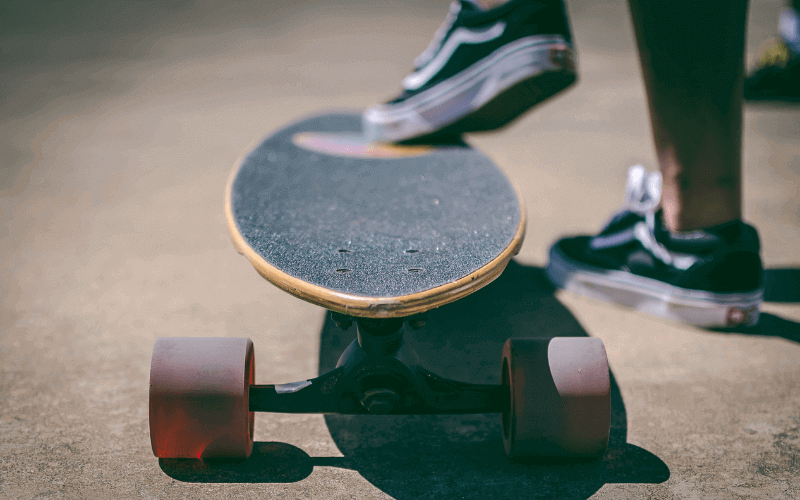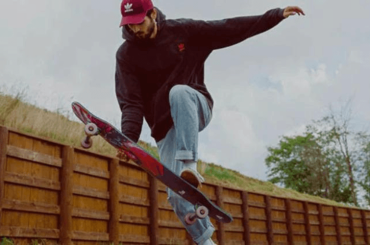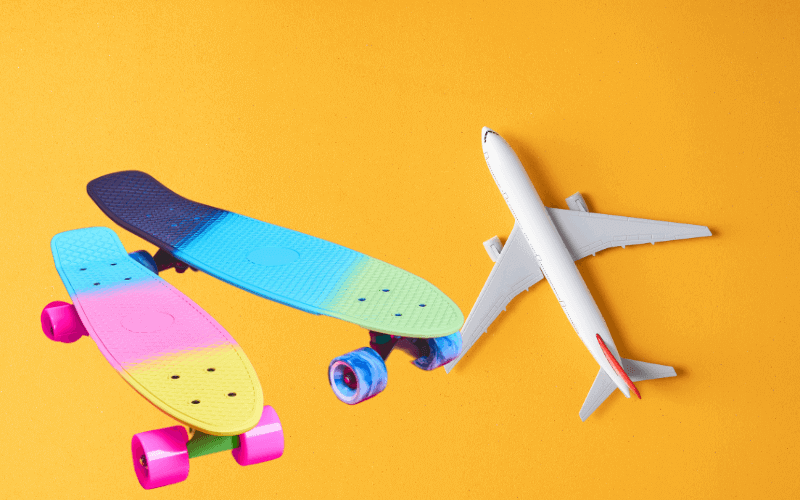If you’re a beginner longboarder, the answer to this question is probably yes. But if you’re an experienced rider, you may not need grip tape at all.
In this post, we’ll discuss the benefits of using grip tape on your longboard and how to choose the right type of grip tape for your needs.
We’ll also share some tips on how to apply grip tape correctly so that you get the most out of it.
So whether you’re just starting or you’ve been riding for years, read on to learn more about grip tape!
Grip Tape & Why You Need It For longboard?
Grip tape is a thin layer of material that is applied to the top of a longboard deck. The purpose of grip tape is to provide traction and prevent slipping. It does this by creating a rough surface that helps the rider’s feet grip the board.
Grip tape is essential for beginners because it gives them a sense of security while they are learning to ride. It can also be helpful for experienced riders who want to try new tricks or push their limits.
There are two main types of grip tape:
- Adhesive
- Non-adhesive.
Adhesive grip tape is the most common type. It has a sticky backing that allows it to be applied directly to the top of the deck.
Non-adhesive grip tape does not have a sticky backing. Instead, it is applied to the bottom of the deck and held in place with screws.
Benefits of using grip tape on a longboard
- Grip tape provides a variety of benefits for longboards.
- It can help to improve traction and stability, making it easier to stay in control when cruising at high speeds.
- It can also protect the deck from wear and tear and can even be used to customize the look of your board.
Many longboards prefer to use clear grip tape so that they can show off the natural wood grain of their deck, while others like to use colored or patterned grip tapes to make their board stand out from the rest.
No matter what your preference, there is a grip tape out there that will suit your needs.
Drawbacks of using grip tape on a longboard
- The main drawback of using grip tape on a longboard is that it can reduce the board’s speed and make it more difficult to slide.
- Grip tape is also known to wear down quickly, especially in hot weather conditions, so you may need to replace it more often than you would with other types of longboard trucks and wheels.
- Another thing to keep in mind is that grip tape can be difficult to apply and even more difficult to remove, so make sure you are prepared for this before you start.
How to apply grip tape to your longboard?
Applying grip tape to your longboard is a relatively simple process. However, there are a few things to keep in mind to ensure that you get the best results.
- First, make sure that the surface of your deck is clean and free of any dirt or debris. This will help the grip tape adhere better and prevent it from peeling off.
- Next, measure the width of your deck and cut the grip tape to size. It’s better to err on the side of too much grip tape than too little.
- Once you have the right size, peel off the backing and apply the grip tape to the top of the deck. Start at one end and work your way to the other, using firm pressure to ensure that the tape adheres well.
- Finally, use a utility knife or razor blade to trim off any excess tape. Be careful not to cut too close to the edge of the deck, as this could cause the grip tape to peel up.
And that’s it! You’ve now successfully applied grip tape to your longboard.
Different types of grip tape and how to choose the right one for you?
Black grip tape is the most popular type of skateboard grip tape. It is made from abrasive materials such as sandpaper and provides a good amount of traction and grip.
Clear grip tape is a popular choice for those who want to customize the look of their board. It is made from a transparent material so it does not change the color or design of the deck.
However, it is more expensive than black grip tape and can be more difficult to apply.
3- Grip pads:
Grip pads are an alternative to grip tape. They are usually made from softer materials such as foam or rubber and provide a less aggressive grip.
They are more expensive than grip tape but can be more comfortable for those with sensitive feet.
One popular type of grip tape is anti-slip tape. This is designed to provide extra traction and prevent slipping, making it ideal for wet or icy conditions.
This type of grip tape has small holes punched into it. This makes it more breathable and comfortable to ride on, especially in hot weather conditions.
This type of grip tape does not have any holes punched into it. It is generally more durable and provides a better grip than perforated grip tape.
When you should and shouldn’t use grip tape on a longboard?
- Grip tape should be used when you need extra traction and stability, such as when cruising at high speeds or riding in rough conditions.
- It can also be used to protect your deck from wear and tear or to customize the look of your board.
- Grip tape should not be used if you are looking for a fast longboard or an easy way to slide.
- It is also not recommended for beginners, as it can be difficult to apply and remove.
Only experienced longboards should attempt to use grip tape.
FAQs:
Can you use skateboard grip tape on a longboard?
Yes, you can use skateboard grip tape on a longboard. The main difference between the two is the size of the board. Skateboard grip tape is typically wider than longboard grip tape so you may need to trim it down to size.
Is grip tape necessary on a penny board?
No, the grip tape is not necessary on a penny board. Penny boards are made of plastic and have textured gripping surfaces built in. However, you may want to add grip tape if you find the stock gripping surface to be slippery.
Is grip tape sandpaper?
No, the grip tape is not sandpaper. Grip tape is made of a rubbery material that is designed to provide traction. Sandpaper is a paper product that is coated with abrasive particles.
How often should I change my grip tape?
You should change your grip tape when it starts to wear down or peel off. Depending on how often you ride, this could be every few months or every few years.
Can you put grip tape over grip tape?
Yes, you can put grip tape over grip tape. However, it is not recommended as it can make your board more difficult to ride and could cause the grip tapes to peel off.
Does spray paint stay on grip tape?
No, the spray paint will not stay on the grip tape. The adhesive on the grip tape will cause the paint to peel off.
Conclusion
Grip tape is not necessary on a longboard, but it can be helpful. If you are just starting, it may be a good idea to use grip tape until you get the hang of riding your board.
Once you become more comfortable, you can experiment with different techniques and decide what works best for you. Remember to always be safe and have fun!





